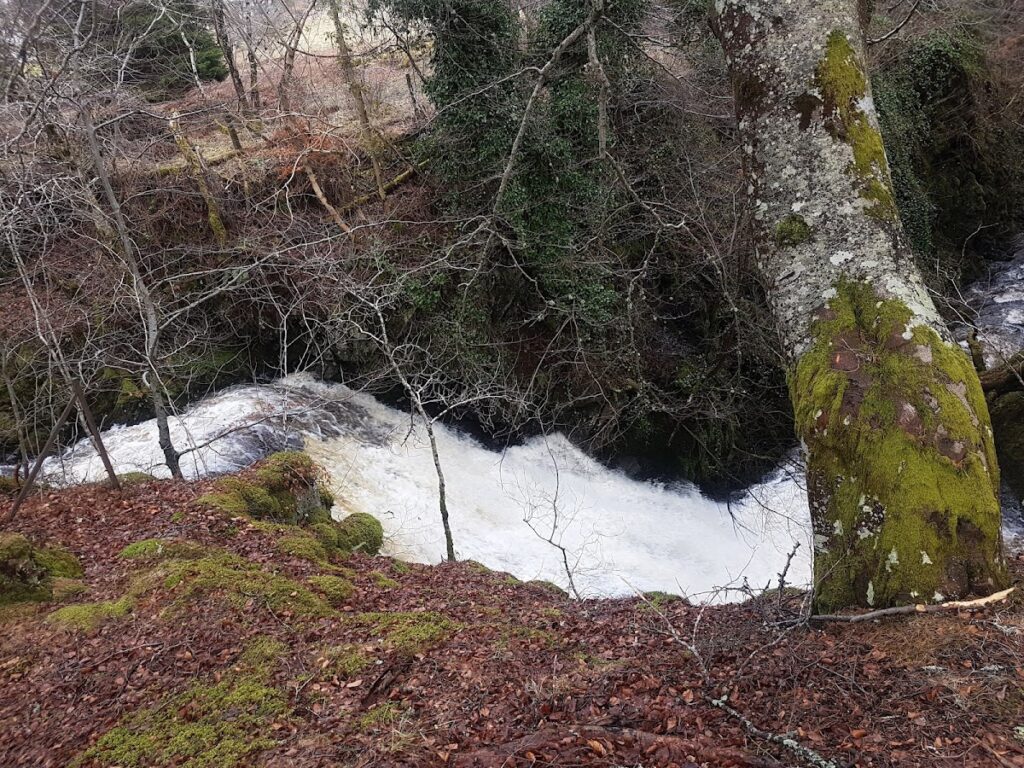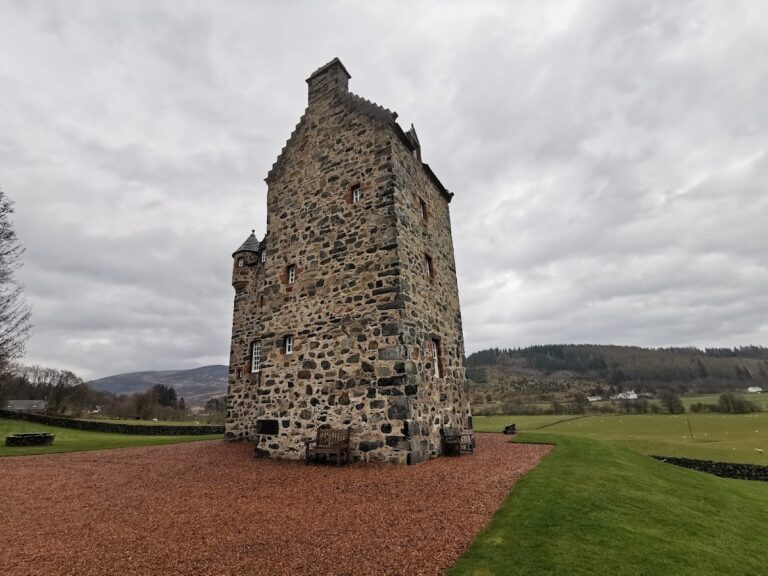Garth Castle: A Medieval Tower House in Scotland
Visitor Information
Google Rating: 3.6
Popularity: Very Low
Google Maps: View on Google Maps
Country: United Kingdom
Civilization: Unclassified
Remains: Military
History
Garth Castle is located near Aberfeldy in modern-day Scotland, United Kingdom. It was built in 1384 by Alexander Stewart, the 1st Earl of Buchan, who was part of the Stewart dynasty. This family traced its lineage back to Robert the Bruce, a significant Scottish king, with Alexander Stewart being his grandson.
The castle’s earliest and most notable association is with Alexander Stewart, known as the Wolf of Badenoch, who occupied the stronghold until his death there in 1396. Following his era, the castle stayed in the hands of the Stewart family for more than a hundred years. Among the prominent figures were Neil Stewart, the second laird (lord) of Forthergill, who died at Garth Castle in 1499, along with his descendants Neil Stewart II, nicknamed “The Red” Neil, and John Stewart, the fourth laird of Forthergill. During this period, the castle served primarily as a noble residence under the stewardship of these lairds.
In the mid-17th century, the castle became a site of military activity during the Royalist uprising known as Glencairn’s rising. In 1654, Royalist Colonel Henry Wogan and a small group of thirty men used the castle as a base. Cromwell’s forces responded with a siege, employing cannon fire that damaged the drawbridge and set the roof ablaze. The castle was ultimately captured and then left in a ruinous state, remaining neglected for over three centuries.
The later history of Garth Castle began in the late 19th century when Donald Currie, a Scottish shipping magnate, acquired the estate in 1880. He undertook repairs to stabilize the structure, focusing on wall conservation that respected the castle’s original style. Subsequently, in the 1960s, the castle changed hands again, purchased by a Mr. Fry of the Fry’s chocolate company. Intended as a holiday residence, the restoration initially began with local architects but was later completed by the English architect Leonard Manasseh, who brought the project to fruition after earlier efforts were considered unsatisfactory.
Remains
Garth Castle occupies a commanding position on a small, grassy knoll that is nearly surrounded by two deep ravines. These ravines have fast-flowing streams that merge just south of the promontory. These waterways are tributaries feeding into the Keltnie burn, which then flows roughly a mile downstream into the River Lyon. This strategic site offered natural defenses enhanced by the terrain’s steep slopes and water barriers.
The castle itself is a square-shaped tower house designed in the style of a donjon, a type of fortified keep common in medieval Scotland. Its robust walls rise to about 60 feet (18 meters) tall, offering both protection and strong views of the surrounding landscape. The construction material is a distinctive mix of large, unshaped boulders combined with neatly quarried stone blocks, reflecting the building practices of the late 14th century when it was erected.
Wall thickness within the structure varies significantly, ranging from approximately 6.5 feet (2.0 meters) at the thinner sections to about 12 feet (3.7 meters) in areas needing the most strength. This massive masonry provided formidable defense against sieges during the castle’s active use. Although the roof was burned during the 1654 attack, the main walls have been partially restored to maintain the castle’s historic silhouette.
Restoration efforts in the late 19th and 20th centuries repaired damaged walls in a manner consistent with the original medieval style, helping to preserve the castle’s characteristic appearance. Today, the remains stand as a sturdy tower integrated within the natural landscape, demonstrating medieval defensive architecture adapted to the local geology and terrain.







